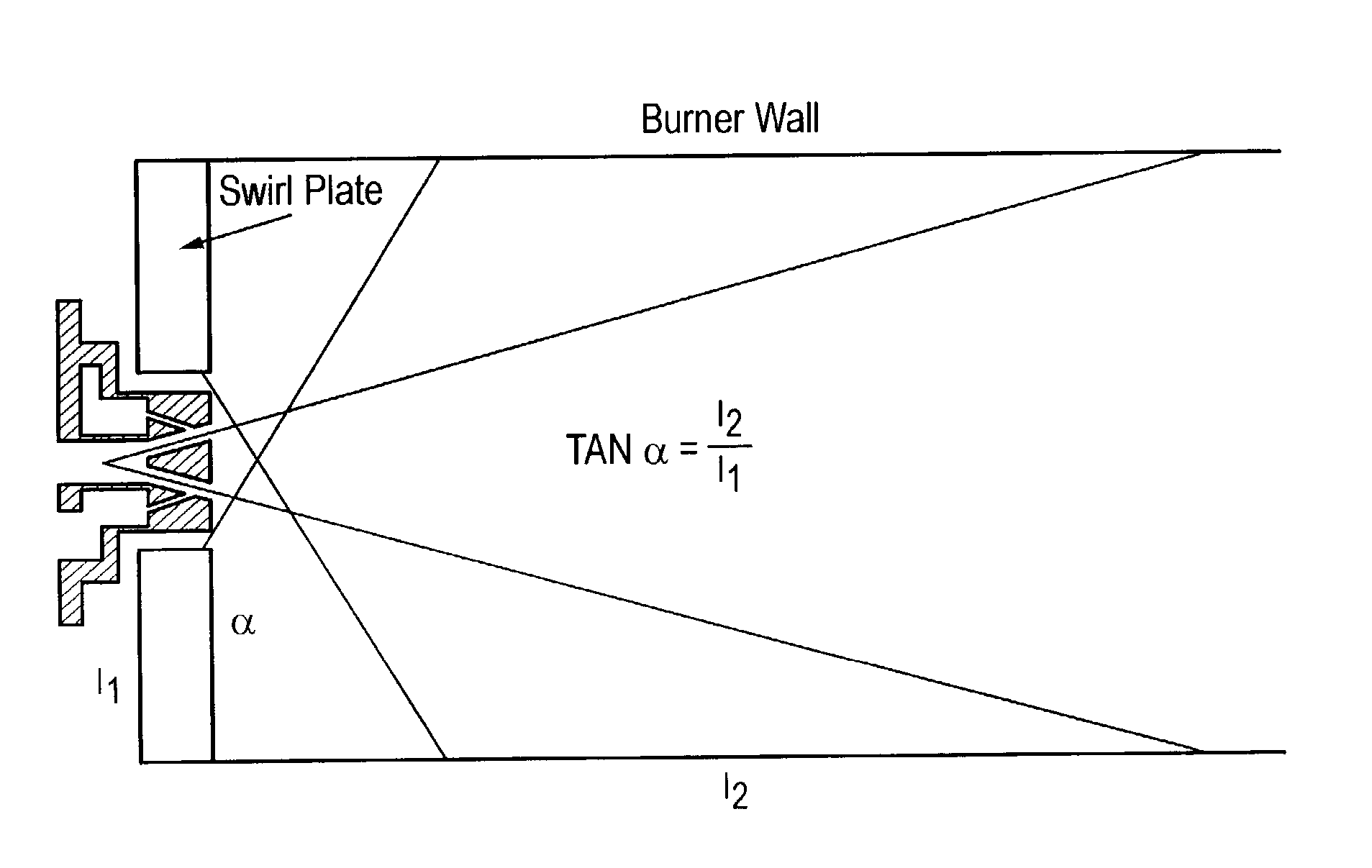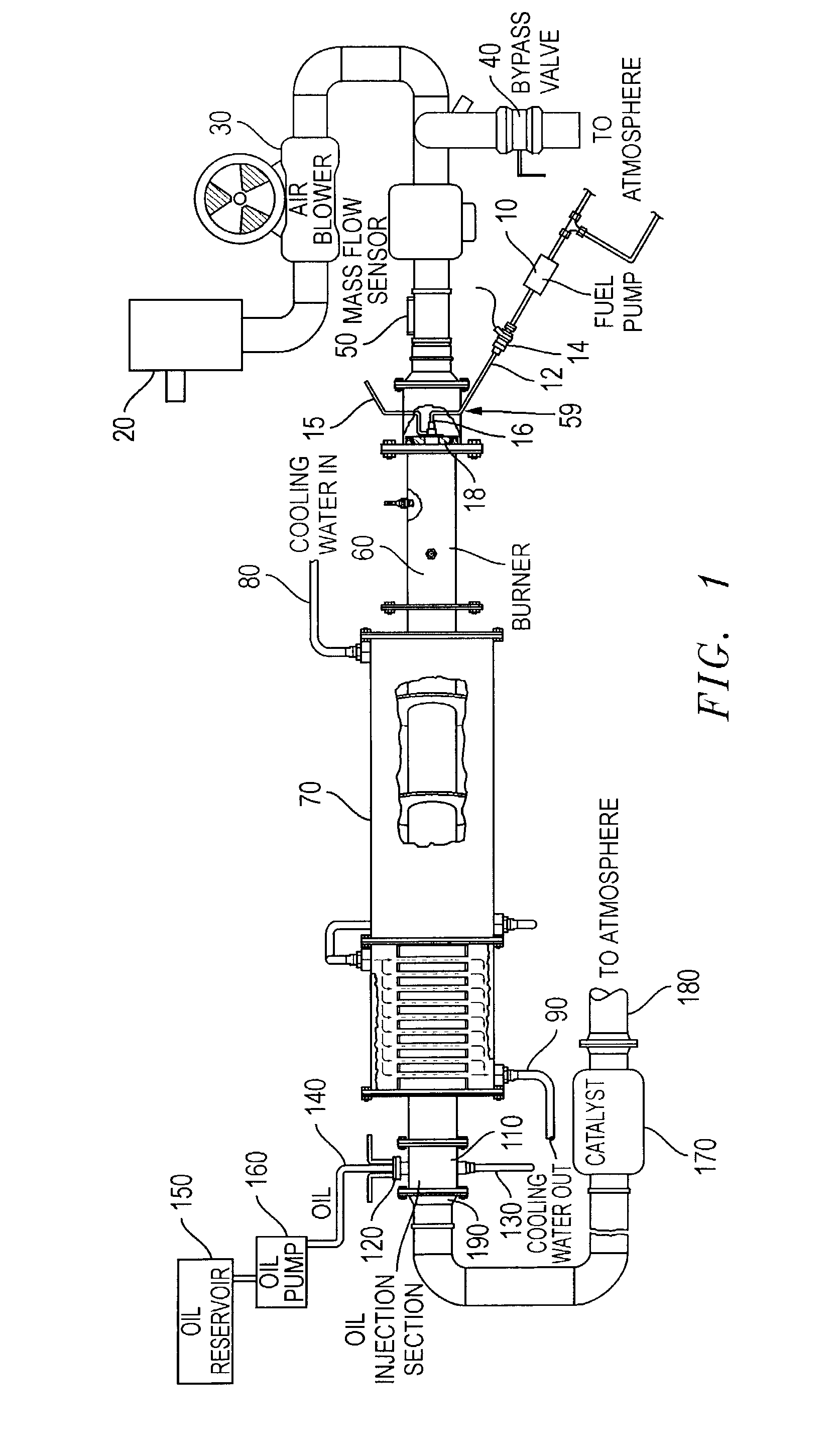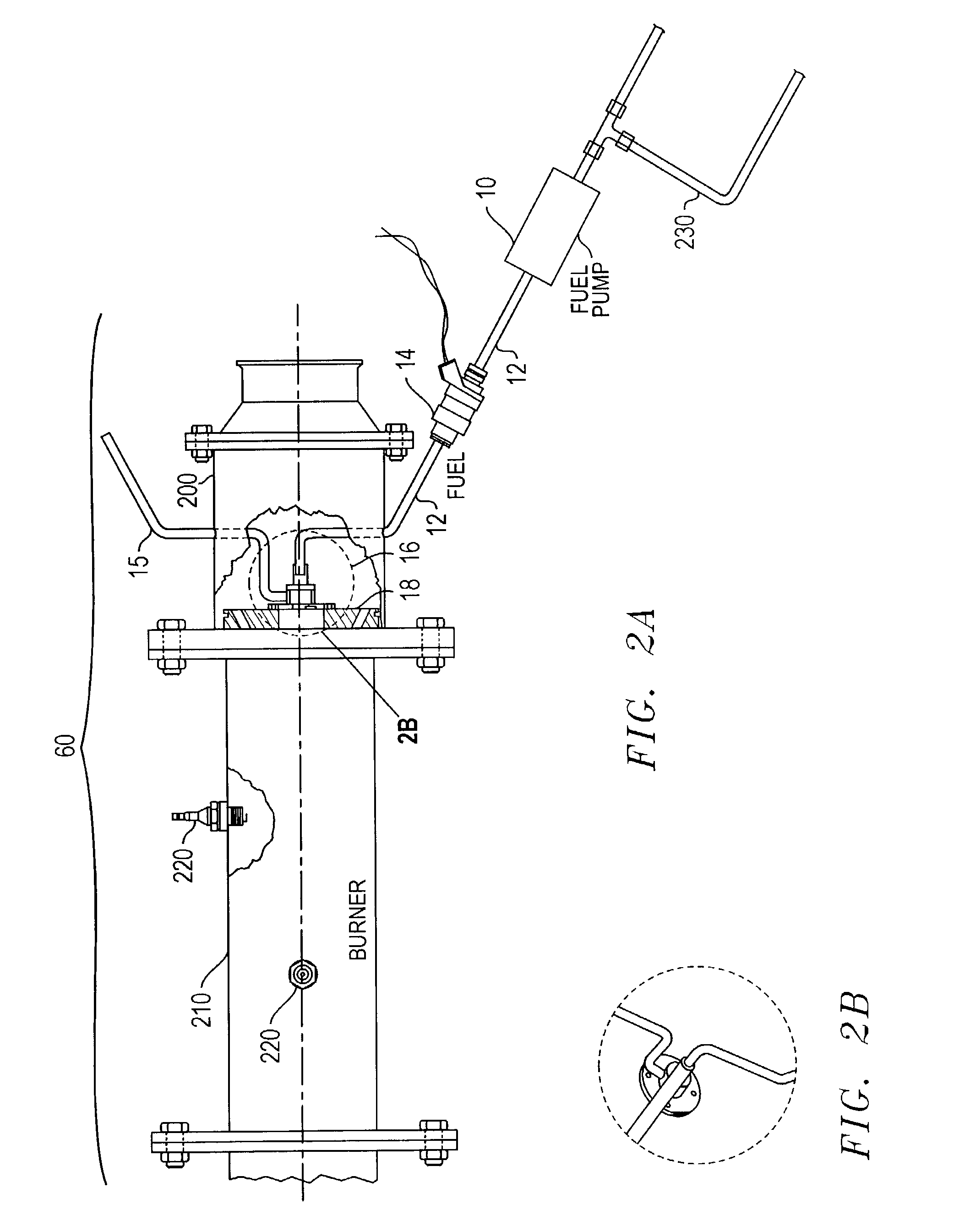Method and apparatus for testing catalytic converter durability
a technology for catalytic converters and apparatuses, applied in the direction of machines/engines, combustion using lump and gaseous fuel, combustion control, etc., can solve problems such as catalytic converter poisoning
- Summary
- Abstract
- Description
- Claims
- Application Information
AI Technical Summary
Benefits of technology
Problems solved by technology
Method used
Image
Examples
example 2
[0113]A series of tests were performed in order to demonstrate that the apparatus could provide useful information on full scale catalytic converter durability with oil injection. The tests were performed with catalyst bricks identified in the following Table:
[0114]
Catalyst ManufacturerEnglehardDesignationFEX-010-M2Size3.268″ Dia. by 3.0″ LongCell Density400 cells / sq. in.Catalytic MetalsPalladium / rhodium @ 9:1Metal Loading60 g / cu. ft.
[0115]Fully formulated lubricant oils were used for the tests, by which is meant that the lubricant oils had detergents and other additives as well as base lube stock. The lubricant oils are described in the following table:
[0116]
Oil No. 1Oil No. 2SwRI identificationEM-2209-EOEM-2210-EOSAE viscosity5W305W30density, g / cu. Cm0.8670.865Weight Percent Phosphorus0.11 0.06
[0117]Modern computer controlled vehicle engines provide two modes of fuel control, an open-loop control (engine crank, warm up, hard acceleration), and stoichiometric closed-loop control (...
example 3
[0124]Testing was done to compare the exhaust gas of a typical gasoline fueled engine to the burner system of the present application. FIG. 9 shows measured, raw exhaust gas concentrations for the present system (50 SCFM) and a Ford 4.6 L, V-8 engine (50 SCFM, 1500 rpm, 90 lb-ft, no EGR), both operating on the same batch of Calif. Phase II fuel, at a slightly lean and a slightly rich exhaust A / F. The A / F was calculated using the measured raw exhaust gas composition and fuel properties; a method well known to those versed in the art.
[0125]FIG. 9 shows that the exhaust of the present system contains much lower THC and NOx levels, compared to a Ford 4.6 L engine. The CO level is about half to three quarters of the engine level, and the CO2 and O2 are approximately the same (as these two elements are largely controlled by AFR, not combustion conditions). THC is low because the burner is highly efficient with steady, well vaporized fuel flow, and there are no quench regions resulting in ...
example 4
[0126]In order to compare the results produced by the instant application with those which would be obtained with an actual internal combustion engine, the results were compared to those provided in Beck, D. C., Somers, J. W., and DiMaggio, C. L., “Axial Characterization of Catalytic Activity in Close-Coupled Lightoff and Underfloor Catalytic Converters”, Applied Catalysis B: Environmental, Col. 11 (1977) pages 257–272, Elsevier Science B.V. (“Beck”). The Beck vehicle had a 3.8 liter V-6 engine with close coupled “light-off” catalytic converters in the exhaust from each cylinder bank of the engine, and the outlets from these were combined into a single pipe containing a single underfloor converter. The light-off catalyst contained only palladium at a loading of 75 g / cu.ft. This catalyst was similar to the catalyst used in the testing of the instant application, as described in the first table of Example 2.
[0127]Phosphorus tends to collect more at the upstream end of the catalyst. In...
PUM
 Login to View More
Login to View More Abstract
Description
Claims
Application Information
 Login to View More
Login to View More - R&D
- Intellectual Property
- Life Sciences
- Materials
- Tech Scout
- Unparalleled Data Quality
- Higher Quality Content
- 60% Fewer Hallucinations
Browse by: Latest US Patents, China's latest patents, Technical Efficacy Thesaurus, Application Domain, Technology Topic, Popular Technical Reports.
© 2025 PatSnap. All rights reserved.Legal|Privacy policy|Modern Slavery Act Transparency Statement|Sitemap|About US| Contact US: help@patsnap.com



